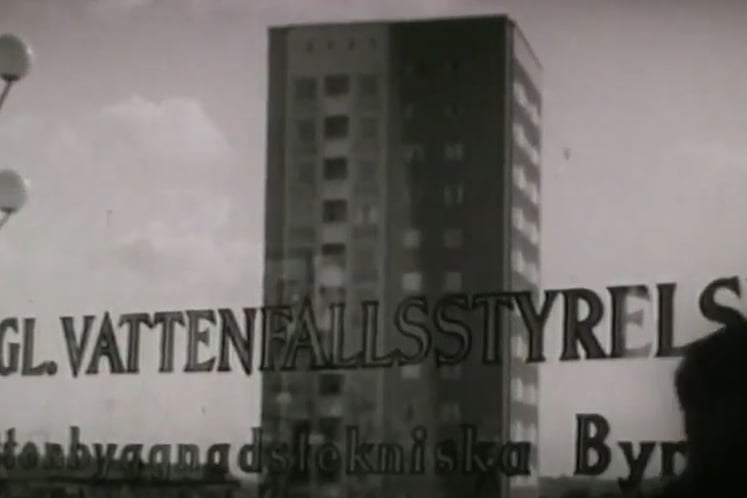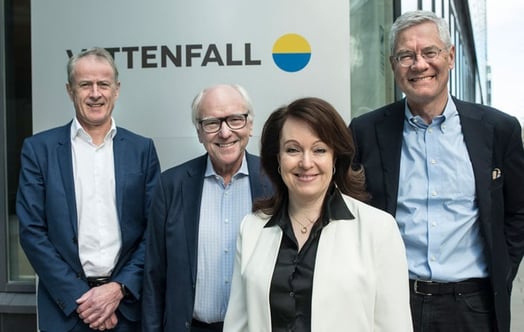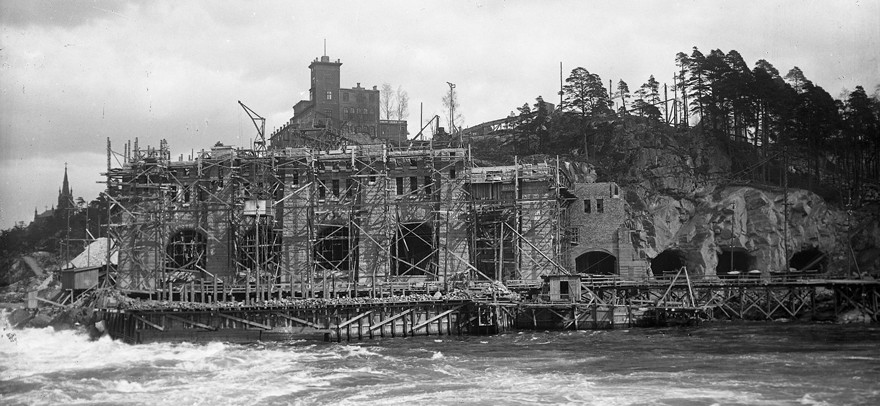
Centuries of corporate challenges
Vattenfall's evolution into a major European energy group has not always been plain sailing. The company has been historically successful in handling large fluctuations between periods of rapid expansion and times of administration. Albeit with some effort.
1909 - 1920: The pioneering years
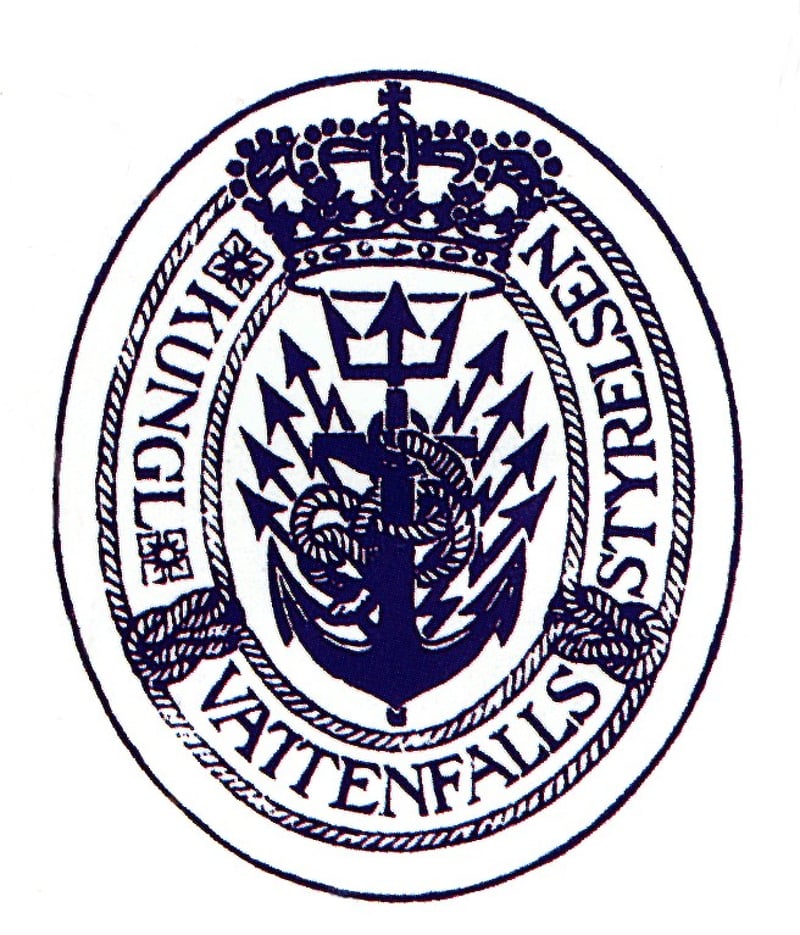
Vattenfall logotype 1909–1934. Year: 1909 | Place: - | Creator: Okänd | ID: VF000168
The initial mission of Kungliga Vattenfallstyrelsen was to develop the country's hydropower resources. Making use of its material resources would help the country to industrialise. Construction of hydro power stations at Trollhättan, Porjus and Älvkarleby was a huge commitment. Development at Vattenfall is reflected in its annual reports. In 1909, turnover was SEK 700,000, while ten years later it was SEK 11 million. The value of Vattenfall's facilities during the same period increased from SEK 28 million to SEK 168 million.
1920 - 1934: Recovery time
Once this first expansion phase was over, around 1920, Vattenfall entered a more administrative phase. In eight years the number of office workers fell by almost 40 per cent, from 1,200 to 750. The number of manual workers fell even more. During the most intensive construction phase, Vattenfall employed around 4,000 manual workers, but by 1928 it had only 300.
1935 - 1970: Hydro power expansion
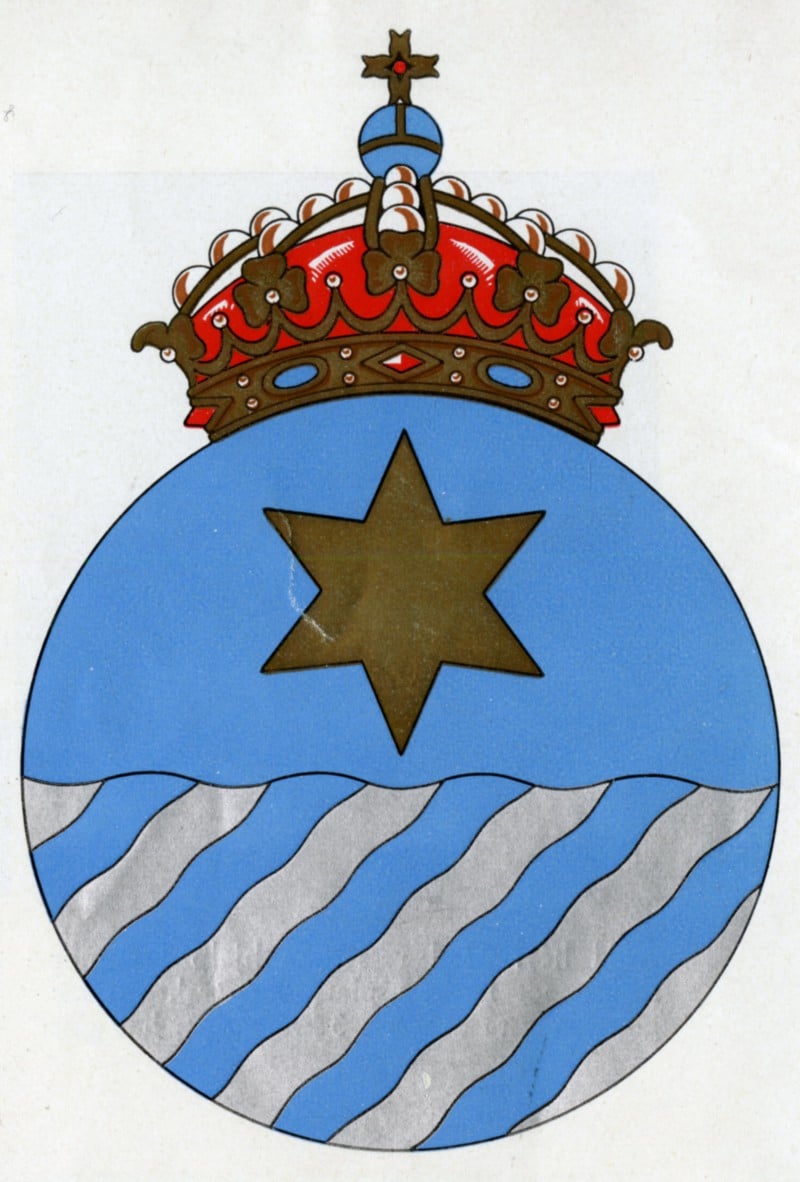
Vattenfall logotype 1935–1991. Year: 1935 | Place: - | Creator: Okänd | ID: VF001050
From the mid 1930s, demand for electricity picked up, and Vattenfall started building hydropower plants again. Now at a furious pace. This expansion is clearly shown by the increase in the number of employees: from 4,000 in 1938 to 14,000 in 1958. In order to cope with these challenges, a major reorganisation was implemented in 1939. Vattenfall was divided into a number of large construction departments and several administrative regional organisations.
Erik Grafström was appointed Director General of Vattenfall in 1958. At that time there was no executive board, and the Director General had 15 managers reporting directly to him. That simply did not work. A sweeping reorganisation was launched in 1962. Cost accounting was replaced by profit responsibility delegated far down in the organisation.
Grafström made a point of ensuring that everyone in his management team would stand behind the new structure. This was a brand new style of leadership. Vattenfall's Director General between 1938 and 1947, Waldemar Borqqvist, expressed personal objections to Grafström: 'It's the Director General who decides'.
During Grafström's time as Director General, the number of employees was reduced considerably. When he left in 1970, Vattenfall had only 8,000 employees. There was less construction going on, and the organisation had been streamlined.
1985: From a building company to an energy service company
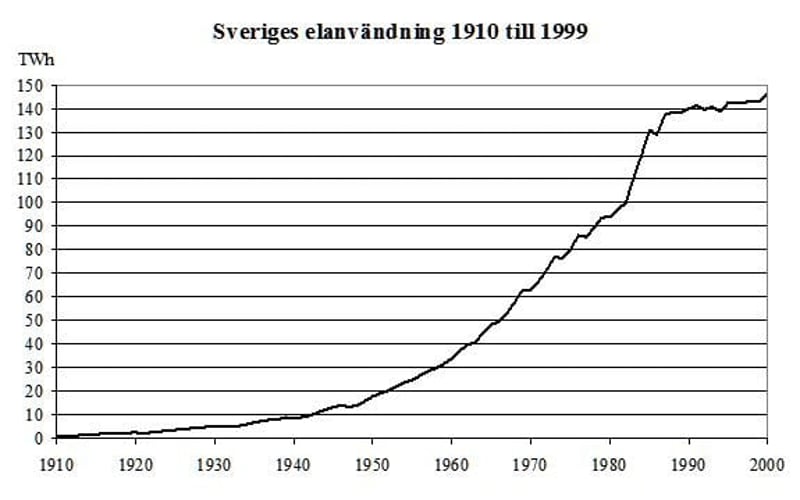
Sweden's use of electricity 1910–1999. Year: - | Place: - | Creator: Okänd | ID: VF100002
The increase of the electricity consumption ended in the middle of the 1980s. Vattenfall then expanded its activities to become the 'Energy Service Company Vattenfall'. Vattenfall was now also facing greater demands for profitability, but was also given greater control over its own investments. In 1988, Vattenfall faced a huge challenge. Two nuclear power plants were to be decommissioned in 1995 and 1996, and electricity production and the associated income therefore needed to be replaced in some other way. Vattenfall underwent another reorganisation, with four new business areas: Energy Market, Electricity Supply, Natural Gas and Energy Technology. After the three-party agreement in 1991, the rapid phase-out of nuclear power was abandoned and the situation turned to normal.
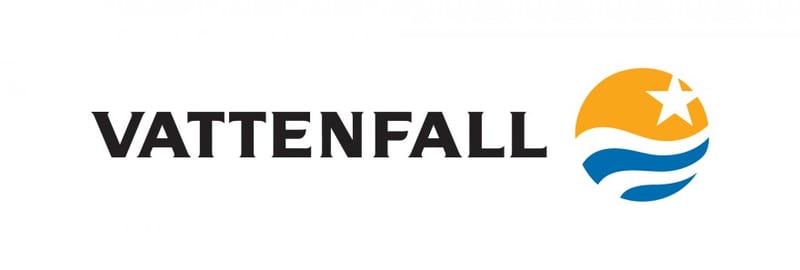
Vattenfall logotype 1992–2018. Year: 1992 | Place: - | Creator: Okänd | ID: VF100000
When Vattenfall was incorporated in 1992, it needed to acquire capital for its investments in a new way. As a public utility, Vattenfall had requested money from the Swedish National Debt Office. Now instead it was a case of borrowing capital from the market. For that reason, a brand new organisation had to be constructed from the ground up: Vattenfall Treasury.
Following incorporation and prior to deregulation of the electricity market in 1996, it was time to abandon the regional organisation structure. Vattenfall was now divided into various functions, principally Energy Market (the competitive segment) and Electricity Grid (monopoly).
2000: Expansion in Europe
Thanks to acquisitions in Germany and Poland in the early 2000s, Vattenfall expanded tremendously in an incredibly short space of time. This put great pressure on its finances. Between 1999 and 2005 the number of employees increased from 8,000 to 32,000. At the same time turnover increased from SEK 28 billion to SEK 129 billion. In order to gain better control, the organisation was decentralised into 13 different profit centres. These were given independent responsibility and reported directly to the group management.
There have also been a number of other reorganisations in the last ten years due to changed strategies.
Video player requires marketing cookies.
To view this content please click here to allow marketing cookies.
The background to the building of the Råcksta office (in Swedish)
Video player requires marketing cookies.
To view this content please click here to allow marketing cookies.
The transformation to an energy service company in 1986 (in Swedish)

